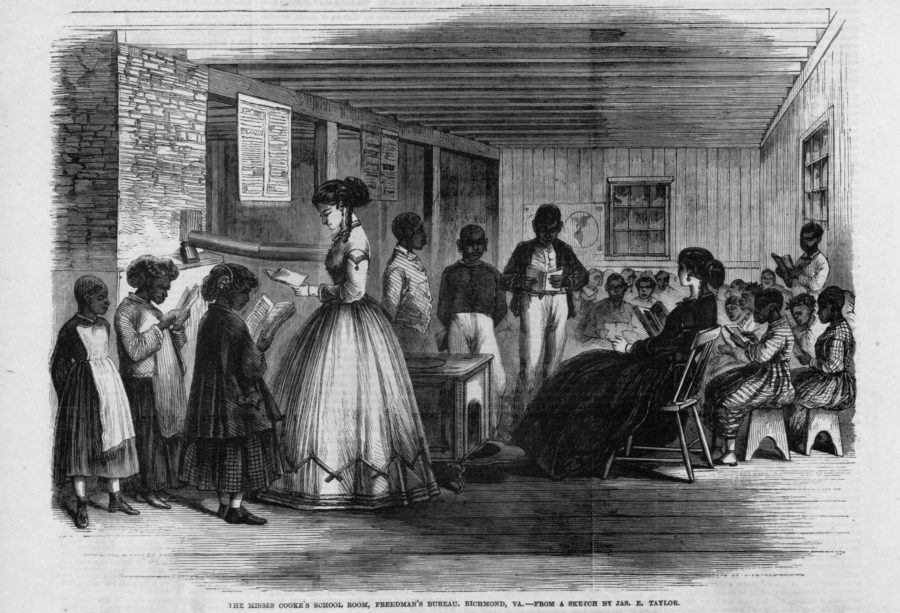
The History Channel’s recent series about Ulysses S. Grant was produced by Leonardo DiCaprio and based on the best-selling biography by Ron Chernow. It concluded on Wednesday and was just about what one would expect from a film created by some of academia’s and entertainment’s biggest leftists.
Although the series did fairly well in rehabilitating and humanizing Grant’s better characteristics, it could not resist hammering home trite narratives about Reconstruction, going so far as to omit well-documented history about Grant and his administration to accomplish the task. He who controls how we speak about the past and what we know about the past controls the future. This show, like much of what is created in academia and entertainment, advances that project.
Let’s start with the good. The documentary shows the hard-scrabble roots of Hiram Ulysses Grant. From the very beginning, we get a glimpse into the poverty and struggles with which the young future president coped while growing up in the old Northwest. We see his withdrawn, humble, yet strong nature—which shined during his performance in the Mexican War, especially at the Battle of Monterrey. It rightly shows the tensions in Grant’s marriage to Julia Dent, the daughter of a Missouri patriarch who owned slaves, amid the gradually escalating and heightening conflicts surrounding slavery and abolition in the pre-Civil War period.
We get a glimpse of Grant’s true heart and patriotism as he decides to get back into the Army in order to fight for and preserve the Union. That’s best summed up in the letter he wrote to his father after the Confederate bombardment of Fort Sumter in South Carolina:
Whatever may have been my political opinions before, I have but one sentiment now. That is we have a Government, and laws and a flag and they must all be sustained. There are but two parties now, Traitor & Patriots and I want hereafter to be ranked with the latter and, I trust, the stronger party.
By this point, the documentary has basically set up the Civil War as a war fought exclusively over the issue of slavery. It omits the other issues—such as tariffs—which had been a sectional conflict going back for decades; it also omits the fact that Southern legislatures voted to secede from the Union democratically and that most Confederates thought that they were doing in 1860 what their great-grandfathers had done in 1776. The documentary is about teaching the Civil War as a morality play.
Nonetheless, the show does fairly well in presenting Grant’s military triumphs, his calm during battle, and his strategic brilliance. The stories of the capture of Forts Henry and Donelson and the bloodbaths at Shiloh, Wilderness, and Cold Harbor are aptly told. Though it was curious that they skipped over the Battle of Spotsylvania—an engagement that saw periodic episodes of hand to hand fighting that lasted for over 20 hours. By the time the show gets to the surrender of Lee at Appomattox, one can clearly see that the Union victory is indelibly linked to Grant’s own strategic genius and his embrace of modern warfare; he knew that the North could sustain losses which the South could not and he used the weight of both its greater population and its industrial base to drown the Confederacy in a tidal wave of men and equipment.
The Left’s Simplistic Narrative on Reconstruction
But after the Civil War, the documentary goes heavy into ginning up a simplistic narrative about Reconstruction and why it failed. The narrative is simple: Grant is a white savior who struggles admirably but fails to advance Civil Rights because of evil, racist white Southerners who violently overthrow the post-Civil War Republican governments of the South.
At the same time, Grant is undermined by a closeted racist Northern population that doesn’t have the stomach to hold the line against Southern racial violence but instead gives up because they weren’t really committed anti-racists.
This simplistic narrative is useful insofar is it advances Leftist aims today, but it omits actual history. The subtext of the assertions about Reconstruction is that anyone who opposes the “social justice” narrative of DiCaprio or Ta-Nehisi Coates today (that reparations hustler was another academic consulted and featured in the documentary) is just following in the footsteps of racist or insufficiently “anti-racist” Southern and Northern whites in a backlash against the movement towards equality.
The problem is that this is not accurate history. Reconstruction could have ended up much worse. Anyone who has studied the post-civil war periods of Russia, Yugoslavia, Rwanda, and the Congo can attest to that. On the other hand, while the documentary gives praise for Sherman’s March to the Sea and Sheridan’s sack of the Shenandoah Valley in 1864 and 1865, it completely elides the consequences of these actions on the South after the Civil War.
The devastation was almost total. As one author puts it,
The war had destroyed two-thirds of Southern railroads and two-thirds of the region’s livestock was gone . . . One hundred million dollars in insurance investments and twice that amount in bank assets had vanished . . . Approximately 300,000 Southern white males in the prime of adulthood died during the war and perhaps another 200,000 were incapacitated, which translated to about 18% of the region’s approximate 2.75 million white males in all age groups in 1860 and about 36% of those over age nineteen.
One month after Appomattox, Grant himself wrote home to his wife, describing the conditions: “The suffering that must exist in the South the next year (1866) . . . will be beyond conception. People who talk of further retaliation and punishment…do not conceive of the suffering endured already, or they are heartless.” This quote was, of course, omitted in the History Channel’s narrative of Grant’s life.
After all the death and devastation of the Civil War, the South received no Marshall Plan as post-1945 Japan and Germany did. If you recall, that piece of American largesse offered aid and assistance to our defeated enemies worth $13 billion in 1945 (or more than $180 billion in today’s money). The Freedman’s Bureau which kept newly freed blacks (and countless poor whites) from starving in 1865 had paltry budgets compared to what post-World War II America spent on her defeated adversaries. The Bureau spent approximately $13 million in its entire existence on aid, mostly to freed black slaves ($200 million today). Sherman’s March to the Sea in 1864 caused over $100 million of damage alone ($1.5 billion in today’s dollars). These facts were completely overlooked.
For once-wealthy Southern whites, the situation after 1865 was disastrous. Most had lost much of their cash in the Civil War; those who had invested in Confederate bonds lost those entirely. Capital was non-existent in the South as Confederate currency was no longer valid. And for those whites and even fewer blacks who owned land, growing cash crops like cotton was no longer the easy path to wealth it once had been.
During the Civil War, cotton production in Egypt and India soared, increasing competition for American Southerners in a way that they were singularly unprepared for—regardless of their race. Hardly anything was done to alleviate the suffering of poor whites and blacks; those landless individuals were in an even tougher spot, most ended up sharecropping because they had neither capital nor land after the war. But the History Channel mentioned none of this.
More Curious Omissions
Add in the explosive mix of poverty and race that characterized Reconstruction governments in the South and what followed was a predictable debacle. But DiCaprio and Chernow’s hagiography completely skipped over the examples of corruption in Southern legislatures during Reconstruction. Telling this part of the complicated truth is out of fashion. So, following the fashion of the day, the History Channel passed over it.
But Southern legislatures during Reconstruction were indeed often very corrupt. Louisiana’s debt went from $17.3 million in 1868 to $29.6 million in 1872; Alabama’s state debt went from $8.3 million to $25 million during the same period.
And taxes went up alongside this corrupt spending. In one Mississippi county in 1866, the property tax rate was $3.25 on each $1,000 worth of property; by 1874, it was $30 per $1,000 of property. Those who failed to pay their property taxes could have their lands confiscated by corrupt local and state officials, who auctioned it off to well-connected political friends. For cash poor, land-rich whites this was a dire threat.
Add in the fact that ex-Confederates were barred from receiving land under the Homestead Act and landless Southern ex-Confederates were stuck in an economically devastated backwater. Like their poor white counterparts, very few freed blacks had the cash means to purchase the necessities to move West and avail themselves of the lands available with the Homestead Act. So all three groups, poor whites, landed whites, and freed blacks were left to fight over economically devastated land. And fight they did. This toxic mix of economic devastation and internal conflict accelerated an already bad situation in the South after the war.
The History Channel also completely passed over President Grant’s role as commander in chief during the Plains Indian Wars and spent about 30 seconds discussing the Credit Mobilier Scandal and the Whiskey Ring. These omissions were curious.
The Battle of the Little Big Horn took place under Grant’s leadership. Bringing the same scorched earth tactics he used to force the Confederacy to submit to the Plains, General William Tecumseh Sherman—again subordinate to now President Grant—destroyed everything that could be of use to the American Indians who resisted the tidal wave of American settlement overspreading tribal lands. And just like the defeated South, American Indians were basically given the back of the federal government’s hand and allowed to rot under the appalling conditions of what was left of their land—the reservation system. A curious omission.
Did DiCaprio (and Chernow in his book) skip this because it makes it harder to unrepentantly glory in the devastation inflicted on the White Confederate South during 1864 and 1865? Further, why did DiCaprio and Chernow pass over all reference to the Credit Mobilier scandal and the Whiskey Ring, where well-connected Northern Republican politicians and financiers bilked taxpayers out of millions of dollars in railroad grants and whiskey tax revenue? Maybe this was done because Chernow’s book was devoted to revising the view of Grant as a corrupt president and was meant to rehabilitate Grant, not to set the record straight in a well-balanced fashion. If anything, it shows that the documentary was more hagiography than a truthful portrayal of both the good and bad about Grant.
Neverthless, I’d say this documentary deserves a decent grade—a C+ perhaps? It does fairly well at going over Grant’s early life and many of his achievements during the Civil War. But it fails utterly to provide balance to its hagiography, above all because of the agenda that propels it. And it can’t help but fall into tired leftist tropes about “this is who we are-ism” that overlook a more complex reality on the ground.
As long as American history is told and portrayed by left-leaning academics and entertainers, they will control what people know about history, what they’re allowed to talk about in our history, and more importantly—how they’re allowed to talk about our history. He who controls the past controls the future. For now, the telling of the past belongs to the Left.






Recent Comments